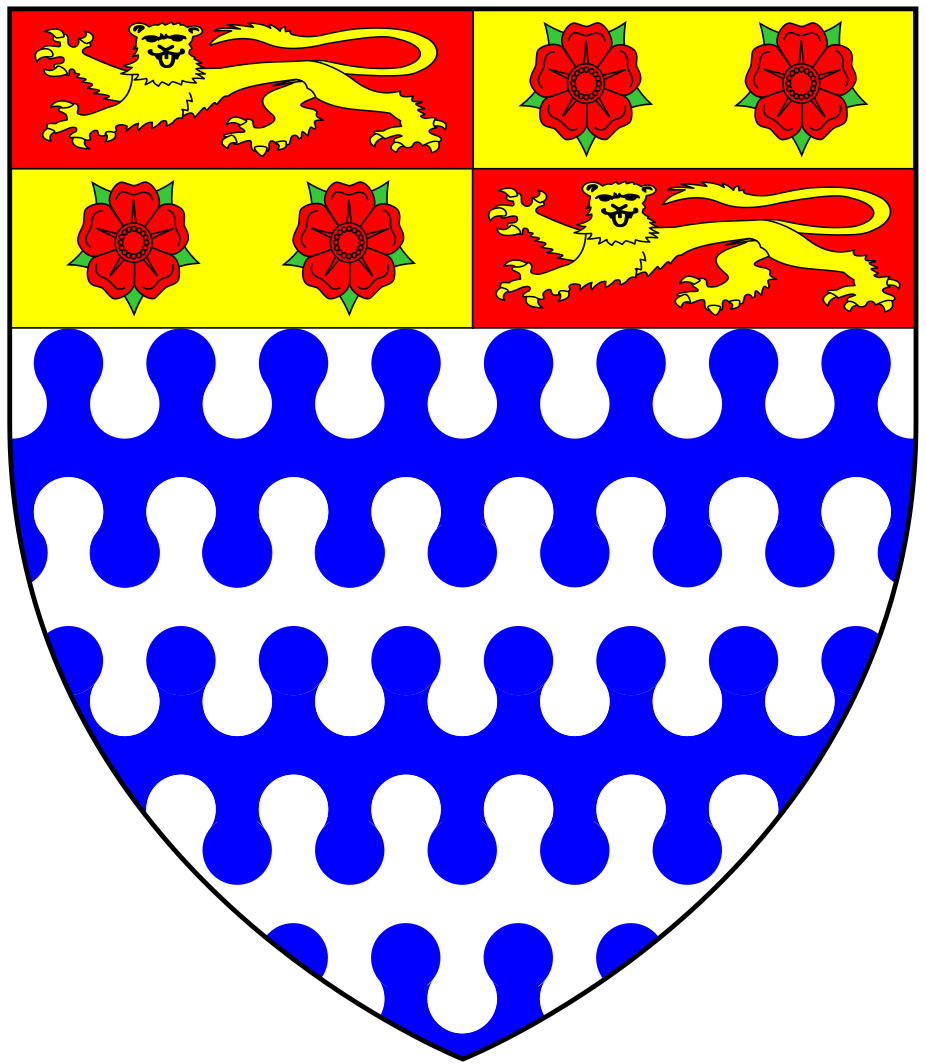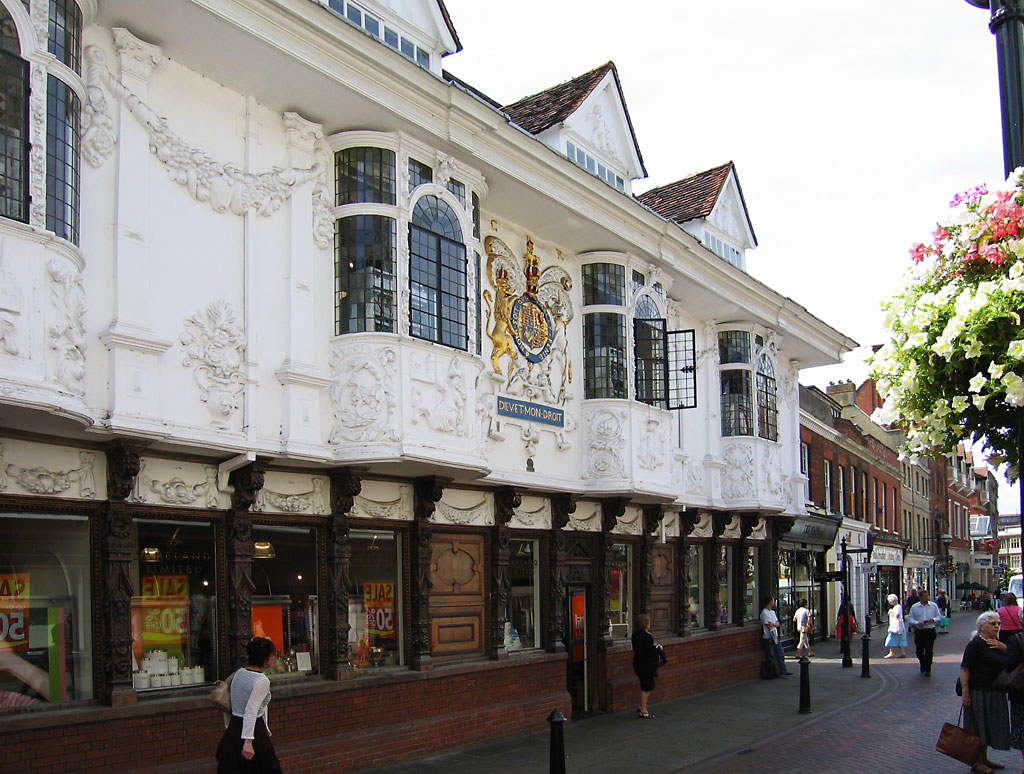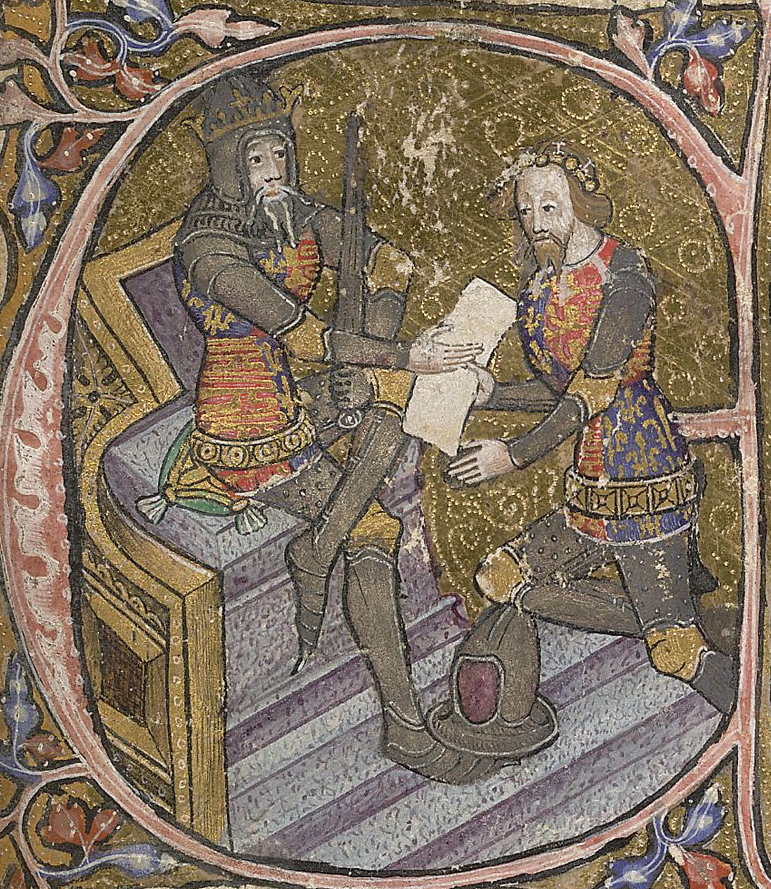|
Company Of Merchant Adventurers Of London
The Company of Merchant Adventurers of London was a trading company founded in the City of London in the early 15th century. It brought together leading merchants in a regulated company in the nature of a guild. Its members’ main business was exporting cloth, especially white (undyed) broadcloth, in exchange for a large range of foreign goods. It traded in northern European ports, competing with the Hanseatic League. It came to focus on Hamburg. Origin The company received its royal charter from King Henry IV in 1407, but its roots may go back to the Fraternity of St. Thomas of Canterbury. It claimed to have liberties existing as early as 1216. The Duke of Brabant granted privileges and in return promised no fees to trading merchants. The company was chiefly chartered to the English merchants at Antwerp in 1305. This body may have included the Staplers, who exported raw wool, as well as the Merchant Adventurers. Henry IV's charter was in favor of the English merchants d ... [...More Info...] [...Related Items...] OR: [Wikipedia] [Google] [Baidu] |
Flanders
Flanders ( or ; ) is the Dutch language, Dutch-speaking northern portion of Belgium and one of the communities, regions and language areas of Belgium. However, there are several overlapping definitions, including ones related to culture, language, politics, and history, and sometimes involving neighbouring countries. The demonym associated with Flanders is Flemings, Fleming, while the corresponding adjective is Flemish people, Flemish, which can also refer to the collective of Dutch dialects spoken in that area, or more generally the Belgian variant of Standard Dutch. Most Flemings live within the Flemish Region, which is a federal state within Belgium with its own elected government. However, like Belgium itself, the official capital of Flanders is the City of Brussels, which lies within the Brussels, Brussels-Capital Region, not the Flemish Region, and the majority of residents there are French speaking. The powers of the Flemish Government in Brussels are limited mainly ... [...More Info...] [...Related Items...] OR: [Wikipedia] [Google] [Baidu] |
Society Of Merchant Venturers
The Society of Merchant Venturers is a charitable organisation in the English city of Bristol. The society can be traced back to a 13th-century guild which went on to fund the 15th-century voyage of John Cabot to Canada. In 1552, it gained a monopoly on sea trading from Bristol from its first royal charter. For centuries it had almost been synonymous with the government of Bristol, especially Bristol Harbour. In recent times, the society's activities have centred on charitable agendas. The society played a part in the development of Bristol, including the building of Clifton Suspension Bridge and the Great Western Railway. It also influenced the development of educational institutions in Greater Bristol, including University of Bristol, University of the West of England, University of Bath, City of Bristol College, Merchants' Academy, Montpelier High School and Wells Cathedral School. History A Guild of Merchants was founded in Bristol by the 13th century, and swiftly became ... [...More Info...] [...Related Items...] OR: [Wikipedia] [Google] [Baidu] |
Kingston Upon Hull
Kingston upon Hull, usually shortened to Hull, is a historic maritime city and unitary authorities of England, unitary authority area in the East Riding of Yorkshire, England. It lies upon the River Hull at its confluence with the Humber Estuary, inland from the North Sea. It is a tightly bounded city which excludes the majority of its suburbs, with a population of (), it is the fourth-largest city in the Yorkshire and the Humber region. The built-up area has a population of 436,300. Hull has more than 800 years of seafaring history and is known as Yorkshire's maritime city. The town of Wyke on Hull was founded late in the 12th century by the monks of Meaux Abbey as a port from which to export their wool. Renamed ''Kings-town upon Hull'' in 1299, Hull had been a market town, military supply port, trading centre, fishing and whaling centre and industrial metropolis. Hull was an early theatre of battle in the First English Civil War, English Civil Wars. Its 18th-century ... [...More Info...] [...Related Items...] OR: [Wikipedia] [Google] [Baidu] |
Newcastle Upon Tyne
Newcastle upon Tyne, or simply Newcastle ( , Received Pronunciation, RP: ), is a City status in the United Kingdom, cathedral city and metropolitan borough in Tyne and Wear, England. It is England's northernmost metropolitan borough, located on the River Tyne's northern bank opposite Gateshead to the south. It is the most populous settlement in the Tyneside conurbation and North East England. Newcastle developed around a Roman Empire, Roman settlement called Pons Aelius. The settlement became known as ''Monkchester'' before taking on the name of The Castle, Newcastle, a castle built in 1080 by William the Conqueror's eldest son, Robert Curthose. It was one of the world's largest ship building and repair centres during the Industrial Revolution. Newcastle was historically part of the county of Northumberland, but governed as a county corporate after 1400. In 1974, Newcastle became part of the newly-created metropolitan county of Tyne and Wear. The local authority is Newcastle Ci ... [...More Info...] [...Related Items...] OR: [Wikipedia] [Google] [Baidu] |
Ipswich
Ipswich () is a port town and Borough status in the United Kingdom, borough in Suffolk, England. It is the county town, and largest in Suffolk, followed by Lowestoft and Bury St Edmunds, and the third-largest population centre in East Anglia, after Peterborough and Norwich. It is northeast of London and in 2011 had a population of 144,957. The Ipswich built-up area is the fourth-largest in the East of England and the 42nd-largest in England and Wales. It includes the towns and villages of Kesgrave, Woodbridge, Suffolk, Woodbridge, Bramford and Martlesham Heath. Ipswich was first recorded during the medieval period as ''Gippeswic'', the town has also been recorded as ''Gyppewicus'' and ''Yppswyche''. It has been continuously inhabited since the Anglo-Saxon settlement of Britain, Saxon period, and is believed to be one of the Oldest town in Britain, oldest towns in the United Kingdom.Hills, Catherine"England's Oldest Town" Retrieved 2 August 2015. The settlement was of great eco ... [...More Info...] [...Related Items...] OR: [Wikipedia] [Google] [Baidu] |
Exeter
Exeter ( ) is a City status in the United Kingdom, cathedral city and the county town of Devon in South West England. It is situated on the River Exe, approximately northeast of Plymouth and southwest of Bristol. In Roman Britain, Exeter was established as the base of Legio II Augusta under the personal command of Vespasian. Exeter became a religious centre in the Middle Ages. Exeter Cathedral, founded in the mid 11th century, became Anglicanism, Anglican in the 16th-century English Reformation. Exeter became an affluent centre for the wool trade, although by the First World War the city was in decline. After the Second World War, much of the city centre was rebuilt and is now a centre for education, business and tourism in Devon and Cornwall. It is home to two of the constituent campuses of the University of Exeter: Streatham Campus, Streatham and St Luke's Campus, St Luke's. The administrative area of Exeter has the status of a non-metropolitan district under the administ ... [...More Info...] [...Related Items...] OR: [Wikipedia] [Google] [Baidu] |
Norwich
Norwich () is a cathedral city and district of the county of Norfolk, England, of which it is the county town. It lies by the River Wensum, about north-east of London, north of Ipswich and east of Peterborough. The population of the Norwich City Council local authority area was estimated to be 144,000 in 2021, which was an increase from 143,135 in 2019. The wider Norwich List of urban areas in the United Kingdom, built-up area had a population of 213,166 at the 2011 census. As the seat of the Episcopal see, See of Norwich, the city has one of the country's largest medieval cathedrals. For much of the second millennium, from medieval to just before Industrial Revolution, industrial times, Norwich was one of the most prosperous and largest towns of England; at one point, it was List of towns and cities in England by historical population, second only to London. Today, it is the largest settlement in East Anglia. Heritage and status Norwich claims to be the most complete medie ... [...More Info...] [...Related Items...] OR: [Wikipedia] [Google] [Baidu] |
York
York is a cathedral city in North Yorkshire, England, with Roman Britain, Roman origins, sited at the confluence of the rivers River Ouse, Yorkshire, Ouse and River Foss, Foss. It has many historic buildings and other structures, such as a York Minster, minster, York Castle, castle and York city walls, city walls, all of which are Listed building, Grade I listed. It is the largest settlement and the administrative centre of the wider City of York district. It is located north-east of Leeds, south of Newcastle upon Tyne and north of London. York's built-up area had a recorded population of 141,685 at the 2021 United Kingdom census, 2021 census. The city was founded under the name of Eboracum in AD 71. It then became the capital of Britannia Inferior, a province of the Roman Empire, and was later the capital of the kingdoms of Deira, Northumbria and Jórvík, Scandinavian York. In the England in the Middle Ages, Middle Ages it became the Province of York, northern England ... [...More Info...] [...Related Items...] OR: [Wikipedia] [Google] [Baidu] |
Mercery
Mercery (from French , meaning "habderdashery" (goods) or "haberdashery" (a shop trading in textiles and notions (sewing), notions) initially referred to silk, linen and fustian textiles among various other piece goods imported to Kingdom of England, England in the 12th century. Eventually, the term evolved to refer to a merchant or trader of textile goods, especially imported textile goods, particularly in England. A merchant would be known as a ''wikt:mercer, mercer'', and the profession as ''wikt:mercery, mercery''. The occupation of mercery has a rich and complex history dating back over 1,000 years in what is now the United Kingdom. London was the major trade centre in England for silk during the Middle Ages, and the trade enjoyed a special position in the economy amongst the wealthy. A typical mercery business was family-run, consisting of a mercer, wife, their family, servants, and apprentices. The husband would be tasked with the marketing and sale of the business's war ... [...More Info...] [...Related Items...] OR: [Wikipedia] [Google] [Baidu] |
Henry VII Of England
Henry VII (28 January 1457 – 21 April 1509), also known as Henry Tudor, was King of England and Lord of Ireland from his seizure of the crown on 22 August 1485 until his death in 1509. He was the first monarch of the House of Tudor. Henry was the son of Edmund Tudor, 1st Earl of Richmond, and Lady Margaret Beaufort. His mother was a great-granddaughter of John of Gaunt, an English prince who founded the Lancastrian cadet branch of the House of Plantagenet. His father was the half-brother of the Lancastrian king Henry VI. Edmund Tudor died three months before his son was born, and Henry was raised by his uncle Jasper Tudor, a Lancastrian, and William Herbert, a supporter of the Yorkist branch of the House of Plantagenet. During Henry's early years, his uncles and the Lancastrians fought a series of civil wars against the Yorkist claimant, Edward IV. After Edward retook the throne in 1471, Henry spent 14 years in exile in Brittany. He attained the throne when his f ... [...More Info...] [...Related Items...] OR: [Wikipedia] [Google] [Baidu] |
Richard II Of England
Richard II (6 January 1367 – ), also known as Richard of Bordeaux, was King of England from 1377 until he was deposed in 1399. He was the son of Edward the Black Prince, Edward, Prince of Wales (later known as the Black Prince), and Joan, Countess of Kent. Richard's father died in 1376, leaving Richard as List of heirs to the English throne, heir apparent to his grandfather, King Edward III; upon the latter's death, the 10-year-old Richard succeeded to the throne. During Richard's first years as king, government was in the hands of a series of regency councils, influenced by Richard's uncles John of Gaunt and Thomas of Woodstock. England at that time faced various problems, most notably the Hundred Years' War. A major challenge of the reign was the Peasants' Revolt in 1381, and the young king played a central part in the successful suppression of this crisis. Less warlike than either his father or grandfather, he sought to bring an end to the Hundred Years' War. A firm ... [...More Info...] [...Related Items...] OR: [Wikipedia] [Google] [Baidu] |








